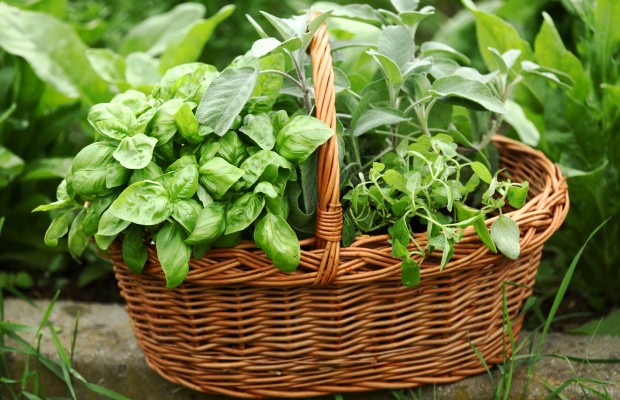A Home Brewer’s Tips for Using Garden Spice in Beer

When spring finally breaks ground, wherever you live, you’re sure to see those long-shuttered in neighbors for the first time in quite a while. They’re the ones dressed in flannel, dragging out their yard tools, turning the soil and sowing rows of seed for their summer and fall harvests. Spring is the optimistic time of year, in the truest sense a reversal of seasonal fortune where we can look forward with some sense of purpose.
As an avid home brewer, those first buds of spring offer an ample opportunity, independent of whatever may come later. A quick walk through any well-tended backyard garden reveals a few adjunct flavors. There are plenty of fresh breaks that can add a dash of unique flavor and impress your summer beer drinking company.
OREGANO
Before summer has its way with the pungent spice, the soft new growth tips make for a curious replacement for aroma hops. I’ve experimented numerous times, adding just a pinch or two of freshly clipped oregano – usually Italian – into the boil about ten to fifteen minutes before the finish.
The results from a small amount can be profound, so be wary of how much of your plant you’re clipping. In your standard, medium bodied pale or strong ale the sweetness is a well-balanced complement to the malt profiles.
Many of my drinkers reported a sudden craving for a slice of cheese pizza, a connection that I’ve made as well. A few times I have tried oregano in lighter bodied beers, without much success.
CHAMOMILE
Here is your garden spice for light bodied beers. I’ve seen a few recipes that called for chamomile tea late in the boil but using fresh flowers is a far more enticing prospect. During mid to late spring, I like to make a Vienna lager that is heavy on the Saaz hops, adding just a few chamomile flowers added to the mix.
The result is drowsy, late afternoon sipper. It’s amazing how well chamomile works with Bohemian style yeasts. If you’re shy, start with a few petals at the end of the boil or dry hopping phase, and work your way up in volume.
SPRUCE TIPS
I love pine. It’s in my Pacific Northwest blood, almost as deeply as my love of well-crafted beer. The same as oregano, my palette favors younger growth. Rather than a dry, woody appeal, fresh spruce delivers a wetter and rounder taste and becomes a uniquely savory accent to your beer. The best part is; you don’t even need a spruce tree, as long as there is one on your afternoon walk.
Late summer in my house is for darker ales. It’s not quite porter season, but I like to make use the inspiration of the lengthening shadows and cooler nights to serve a malty, robust beer. I throw some spruce greens from the tips of the bough, lightly minced, into the boil at flame out and allow that green, earthy tone to work in tandem with the hop bitterness. Spruce tips, in my keg fridge, serve as the seasonal bridge between April and September.
















